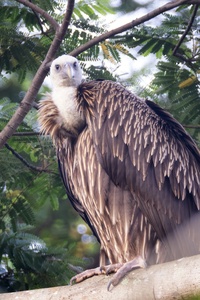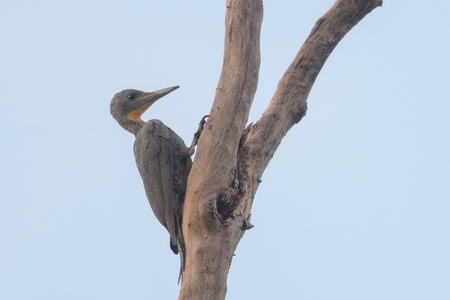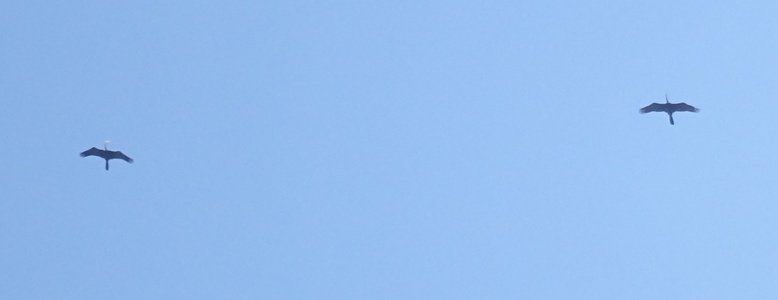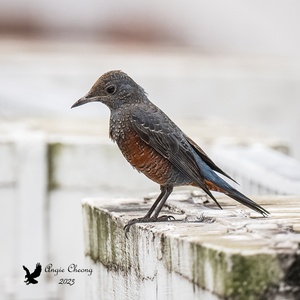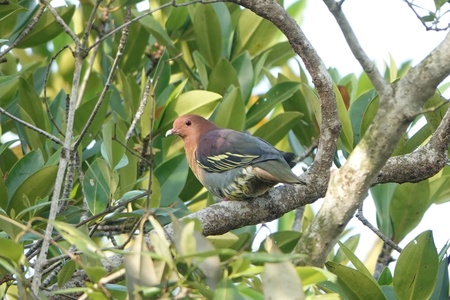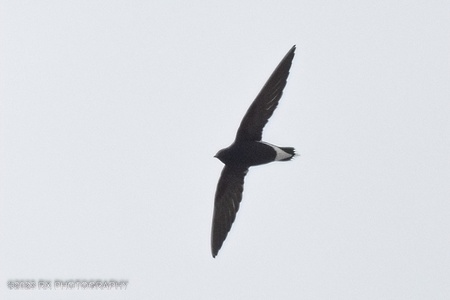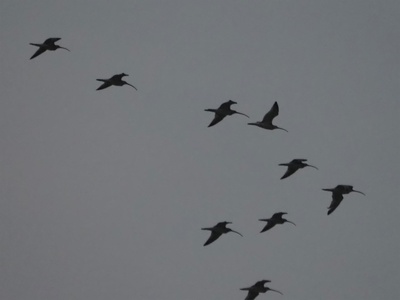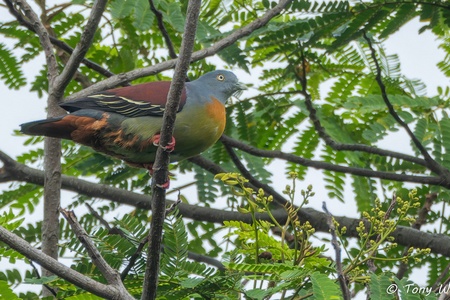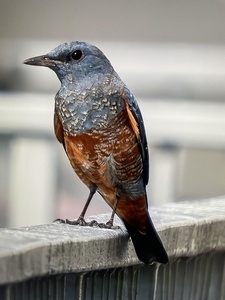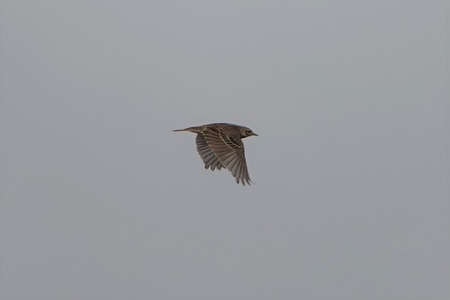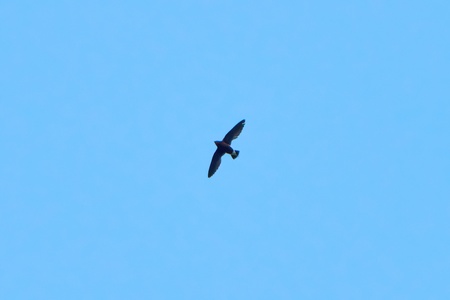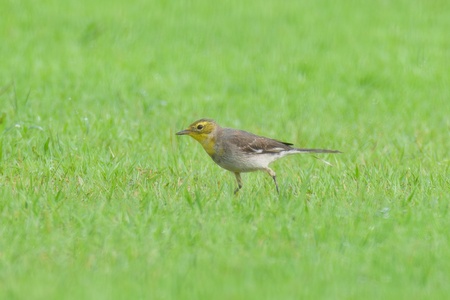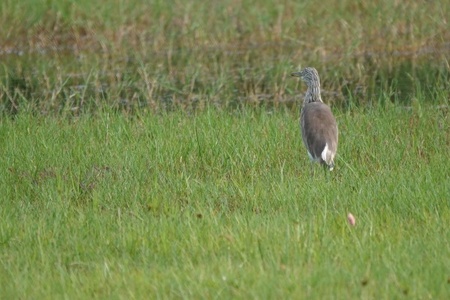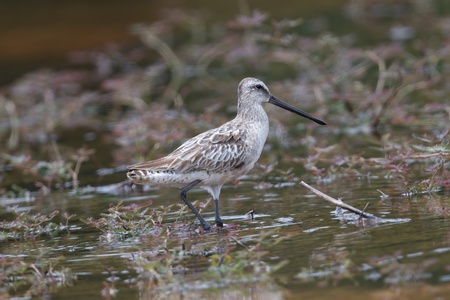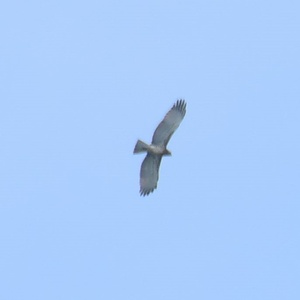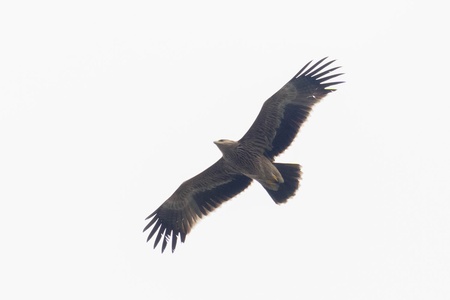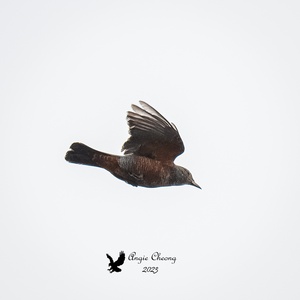About the Singapore Bird Records Committee
The SBRC, established as a part of the
Bird Society of Singapore (BirdSoc SG), seeks to lead the documentation, archival, and sharing of
avifaunal records in Singapore through scientific and data-driven methods. We maintain the
Singapore Bird
Checklist as well as the
Singapore Bird
Database, and ensure that they are kept up-to-date
and accurate. We also regularly assess the status of birds in Singapore and make relevant
information easily accessible to the local and regional birding community.
Our members operate with integrity, transparency, and take care to present information
accurately and objectively. To ensure transparency, we have procedures in place to prevent
conflicts of interest in voting, and publicly display the results of our voting process for
scrutiny. We will always maintain a strong relationship with regional experts in the field of
ornithology to guide our decision-making.
The current members of the SBRC are:
- Keita Sin (Chair)
- Raghav Narayanswamy (Vice-chair)
- Dillen Ng
- Jen Wei Yip
- Movin Nyanasengeran
- Richard White
- Sandra Chia
Checklist and categories
The SBRC follows the latest taxonomy published by the International Ornithological Committee.
The current IOC version used by both the Singapore Bird Database and the Singapore Bird
Checklist, as well as any other works published by the Bird Society of Singapore, is
version 14.1.
There are two versions of the Singapore Bird Checklist. One is the live version,
accessible on
this site and on our
main site.
The other is a downloadable Excel version, which is accessed through our
Downloads page.
Our downloadable checklist is updated twice a year and is a "timestamp" that captures
the list of species at that point, while the live versions are continually updated
to include the latest Records Committee decisions.
The categories are listed below. Species in Categories A and C are included in the Singapore
Bird Checklist.
- Category A Species that have occurred naturally in the
wild within the last 30 years.
- Category B1 Species previously placed in Category A but
last recorded more than 30 years ago.
- Category B2 Species that are most likely to have originated
from captivity, formerly placed in Category C, but no longer have self-sustaining
breeding populations.
- Category C Species that are most likely to have originated
from captivity, with self-sustaining breeding populations.
- Category D Species that would otherwise appear in
Category A, but with reasonable doubt that they have
occurred naturally in the wild.
- Category E1 Species that are most likely to have originated from captivity,
with breeding populations, if any, thought to not be self-sustaining.
- Category E2 Species that are most likely to have
originated from human-assisted transportees.
- Category E3 Species that would otherwise appear in Category A,
but may potentially have been recorded as human-assisted transportees instead
(e.g. ship-assisted birds).
- Category F Species that have been formally reported but
with no sufficient evidence that they have
occurred in the wild.
- Annex Species which have been recorded in an apparently
wild state but not necessarily within Singapore's national boundaries.
The Annex is used to categorise pelagic species recorded in the Singapore Straits,
where some records may be of birds outside of Singapore's territorial waters.
We place species in categories to classify their occurrences in Singapore based on their likely
origin, as well as based on the recency of their occurrences. The species categorisation is not
linked to abundance.
We define the species statuses as follows. Species may each fall under one or more of these
statuses.
- Resident Species with populations thought to be in
Singapore generally throughout the year
- Visitor Species with generally resident populations
within the Greater Sundaic region, but not
regularly recorded in Singapore
- Migrant Species that are known to undertake annual (or
near-annual) migration to Singapore
- Vagrant Species that are not known to regularly migrate
to Singapore or the immediate region
- Introduced All species in Categories C and E1
- Introduced (ship-assisted) All species in Categories E2
and E3
Records in the Singapore Bird Database
Records must meet a number of criteria to be assessed by the SBRC. Firstly, they must be from
within Singapore's national boundaries - although we generally do assess records of pelagic
birds which may not be strictly within Singapore's maritime waters (see our list of categories
below). For defining Singapore's maritime waters, we use the boundaries defined in
OpenSeaMap, which are available
online.
Secondly, the species must be either of the following: (1) a Review Species, or (2) a species
new to Singapore's avifauna. Lastly, the species must not be one that the committee has categorised as an "obvious escapee"
(e. g. several seed-eating birds such as waxbills and bishops from Africa that are most unlikely to occur in Singapore
under normal circumstances). In due course, we will publish the full list of species which
fall under this category (category E1 of our extended Singapore Bird Checklist). In most cases,
these species are deemed as such because they do not migrate or migrate only short distances,
or generally because traits of the species would not be compatible with wild occurrences in
Singapore.
Review Species (formerly "rarities") are determined generally based on their rarity
in Singapore. The rough quantitative guidelines for such birds are: Less than 4
independent records per year and less than 10 independent individuals on average
in the past 5 years. We also consider species with an annual average of less than
six records and less than 20 individuals for inclusion in the Review List if they
are of conservation/research importance, or if they present considerable identification
challenges. Additionally, taxa with subspecific interest also contribute to the
determination of Review Species.
Our committee members will make every effort to reach out to those who have reported sightings
of Review Species; our preference is to have record submissions from observers, as these serve as
important primary documentation for future generations. If this is unfeasible, or if no
submission is received, we will collate all available information and upload the record through
the admin interface, with media files not publicly displayed unless permission is granted by the
observer.
The SBRC will assess whether to compile all documented records available for the
species, or to compile only records from the five-year period leading up to the addition. This
assessment will be based on the historical rarity of the species in Singapore.
Although we wish we could make all records publicly available, it is not possible for us to do
so in some cases, as they may have been recorded on official surveys. Such records are kept
confidential until they become publicly available in a report or publication.
If a record is submitted and only observed by a single person who is an SBRC member,
that member will abstain from the vote. If the same bird is subsequently observed by the
community before the vote is closed, the committee member who abstained may add a vote.
It is often tricky to assess the legitimacy, identity, and origin of rare birds found in
Singapore based on limited information and knowledge. SBRC decisions are based on what the
committee thinks is the most reasonable and likely explanation for the sighting. To provide
further insight on the process, we have included several of the key factors which may influence
our assessment of records, causing them to not be accepted or to be considered as likely
escapees:
- Bird trade The species is popular in the trade, commonly
found in the market or known to be kept in local collections. Songbirds are especially
hard to assess given that many of the species that are sold come from surrounding
regions, which could be within range of the species’ natural dispersive or migratory
movements.
- Physical condition The bird shows signs that hint at
possible captive origins e.g. exhibiting unnatural behaviour, damaged or abnormal
plumage/moult/bare parts, tags or rings attached to bird.
- Vagrancy Species is not known to be a long-distance
migrant and does not exhibit dispersive/irruptive/nomadic behaviour. There are also no
verifiable records of this species in neighbouring countries.
- Timing of sighting Bird was spotted during an unlikely
time of the year based on its ecology and range e.g. long-distance migrant spotted in
Singapore in June, outside of the typical migratory months.
- Location/habitat Species was found in a location that does
not match its typical habitat preferences or suggests captive origins e.g. forest
specialist found in an urban park.
- Identity Species is difficult to separate from its
congeners and may require additional information such as morphometrics, genetic samples,
diagnostic calls/songs, breeding plumage to confidently identify.
Our Records Committee contains members with expertise not just in Singapore, but also in various
other parts of the Southeast Asia and the world. However, there are several species groups that
are notoriously difficult to identify, and for such species, we often collect opinions from our
panel of experts from the region:
- Dave Bakewell
- James Eaton
- Ayuwat Jearwattanakanok
- Martin Kennewell
- Frank Rheindt
The final review is then conducted by our Records Committee. The assessments and opinions listed
on our website are solely by the SBRC and do not reflect the opinions of our panel members.
The SBRC aims to finalise final verdicts for all records within four weeks. In some
records, this is not possible as the sighting might merit a lengthier deliberation period. For
instance, if the committee needs to consult regional or global subject-matter experts to come to
a conclusion on a record, the timeline may be extended. We strive to close all records in a
timely manner despite these constraints, and will update observers in cases of excessive delays.
Does the SBRC really review every single record that is submitted?
Yes, through two different methods. A first group of species consists of
birds that are either very rare or difficult to identify. SBRC members
will explicitly cast a vote for these species. The second group of birds
are Review Species that are slightly less rare and do not pose significant
identification challenges. For these records, a vote for acceptance is
assumed unless any SBRC member voices objection within 14 days, in which case
an explicit vote will be carried out.
This message appears for records that were verified through non-explicit votes
as elaborated in the previous question.
Individual records of species which are in the Singapore Bird Checklist are typically voted on
as "votes on records", where the veracity and provenance of the record are evaluated.
Votes on categorisation, however, are used in cases where the SBRC evaluates
the categorisation of a species on the Singapore Bird Checklist. Records of
species new to the checklist, for example, are votes on categorisation. Reclassification of
an escapee species due to a population increase (from Category E to Category C) is similarly
considered a categorisation vote.
Members of the SBRC are required to vote on the identification and veracity of the record, as well as on its
origins/provenance. Members also should enter a rationale for their vote, as well as any
references considered when making the vote. Any changes made after the initial vote was cast
will be automatically tracked. Once 80% of the committee has voted, the record can be closed,
although in cases of narrow margins, the Chair may wait for all members to cast votes before closing the record.
In cases of ties, the more conservative option is always chosen. For example, in case of a tie between For
and Against votes, the record will not be accepted. The definitions of each possible vote are as follows.
Identification
- For Member agrees with the veracity of this record
- Against Member disagrees with the veracity of this record
- Abstain Member declines to vote on the record
Origins/provenance
- Wild Member believes record pertains to a wild bird
- Escapee Member believes record pertains to an escaped
bird
- Limbo Member believes provenance of bird is ambiguous
- Annex 1 Member believes record pertains to a wild bird,
but outside of Singapore's national boundaries
- Annex 2 Member believes record pertains to a wild bird,
but status within national boundaries unconfirmed (e.g. carcasses found within national
boundaries)
- Ship-assisted Member believes record pertains to a
ship-assisted bird
Members of the SBRC will vote on the categorisation of the species in the Singapore Bird Checklist. The
categories used by the checklist are listed in this methodology page. Just like for voting on
records, members will also enter a rationale and any relevant references for their vote.
We will reach out to the submitter to thank them for their submission, and update them on the
verdict that was reached. As needed, we will also update the Background section of the relevant
record to include an explanation of the committee's rationale, for particularly contentious
records.
Historical records are not formally evaluated by the entire SBRC and are collated
by compilers in the Bird Society of Singapore's records gathering team. The first batch of over
1000 historical records were collated by
Sin &
Ng (2021) and imported to the Singapore Bird Database. Additional historical records
continue to be collated and imported to the database.
Different records may be placed under a different level of scrutiny depending on factors like
the rarity of the species in Singapore, difficulty in identification from similar confusion
species, and whether the record is from a well-established location for the species in question.
Our committee aims to determine the likelihood of validity for each record, which is only possible
when such factors are considered in addition to the evidence for the record itself. Additionally,
for historical records, given that nearly all primary documentation was either never made available,
made available but subsequently lost by other records-keepers, or of poor quality, it is impossible
to apply the current high standard of evidence to these past records. We mostly defer to Wang &
Hails (2007) for assessment of most of these historical records.
In general, we only compile records of species for periods when they are scarce to rare.
The main reason is that less rare species are less likely to be documented adequately in the
original literature or on online platforms. Many records of these birds would also go unreported.
Compilation for these species would not be meaningful and may even give a false representation of
abundance over time.
Yes. If an SBRC member feels that the information presently available would change the committee's
perception on a past record, they may request a revote for that record. The entire committee
will be notified, and will consider whether to reopen the vote. For historical records (i.e.
records not evaluated by the whole committee), the record will be reopened for revoting if 50%
of the committee agrees to proceed with a revote; for other records, the record will be reopened
if more than 50% of the committee agrees to proceed.
Records are classified as Subrecords if the SBRC is confident that they refer to the same record
(same bird, or same flock of birds). In cases where the multiple records are submitted for the
same sighting, the discoverer’s record is set as the parent record. Otherwise, the earliest
submission will be the parent record.
Records should be classified as Related Records if the SBRC suspects that they refer to the same
individual as another record. For example, if an individual of a rare species is sporadically
sighted at the same area every few months, such records should be classified as Related, unless
the SBRC has reason to believe that certain records are of unique individuals (e.g. different
sex, distinct plumage etc). By definition, marking a record as a Subrecord means that the bird
was present between the date of the parent record and the Subrecord. Accordingly, the last date
of the parent record will be automatically extended, if needed, to include the Subrecord. This
is not the case for Related Records.
The SBRC monitors platforms like eBird and Facebook for sightings of continuing
birds, and extends records accordingly, assuming reliable information is available. No voting is
required unless a sighting is dubious.
- Species
- First and last date
- Location
- Number of individuals
- Verdict of record
- Voting results
- All relevant references
- Any media (images or audio files) If unavailable,
descriptions entered by the observer are displayed instead
- References
- Relevant background For contentious records (e.g.
difficult to identify species, contentious provenance) the rationale behind the SBRC
votes should be included in an objective manner.
- Verdict of record
- Any revisions made to the record details To be displayed
transparently in the Record Revisions section
In some cases, more information may become available to the committee after a record is
published on our website. We will update the relevant section(s) on the record page, and also
note the specific changes which were made in the Record Revisions section. This section may also
be used to indicate corrections made to incorrect information.
Other matters
We use data from our Singapore Bird Database as well as eBird data to compile our monthly
reports. eBird data becomes available for download on the 15th of the following month, and after
a brief editing period, we use the downloaded data to generate the report for the month. We also
publish reports for checklist updates, and on an ad-hoc basis as needed (i.e. when updating the
Review List).
